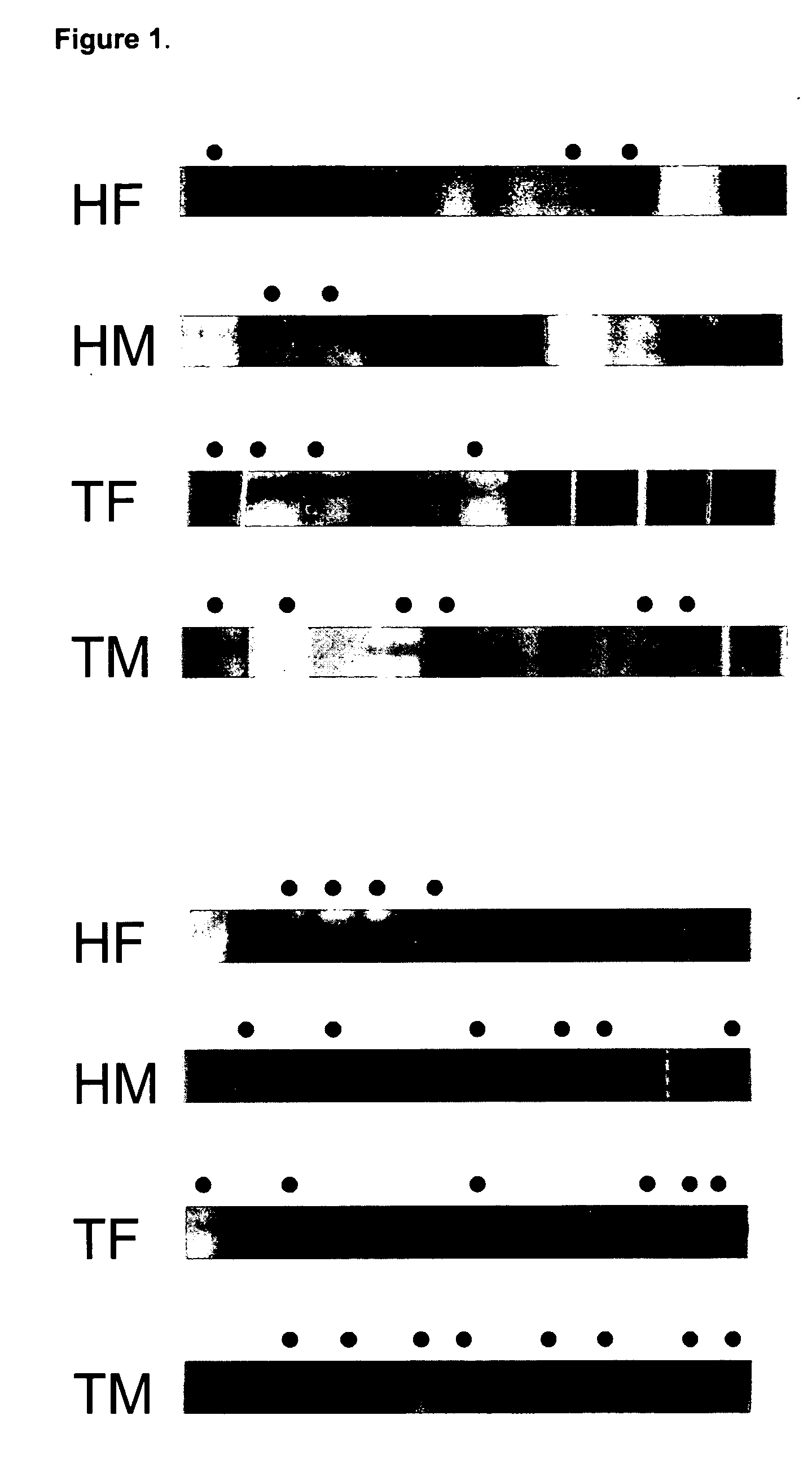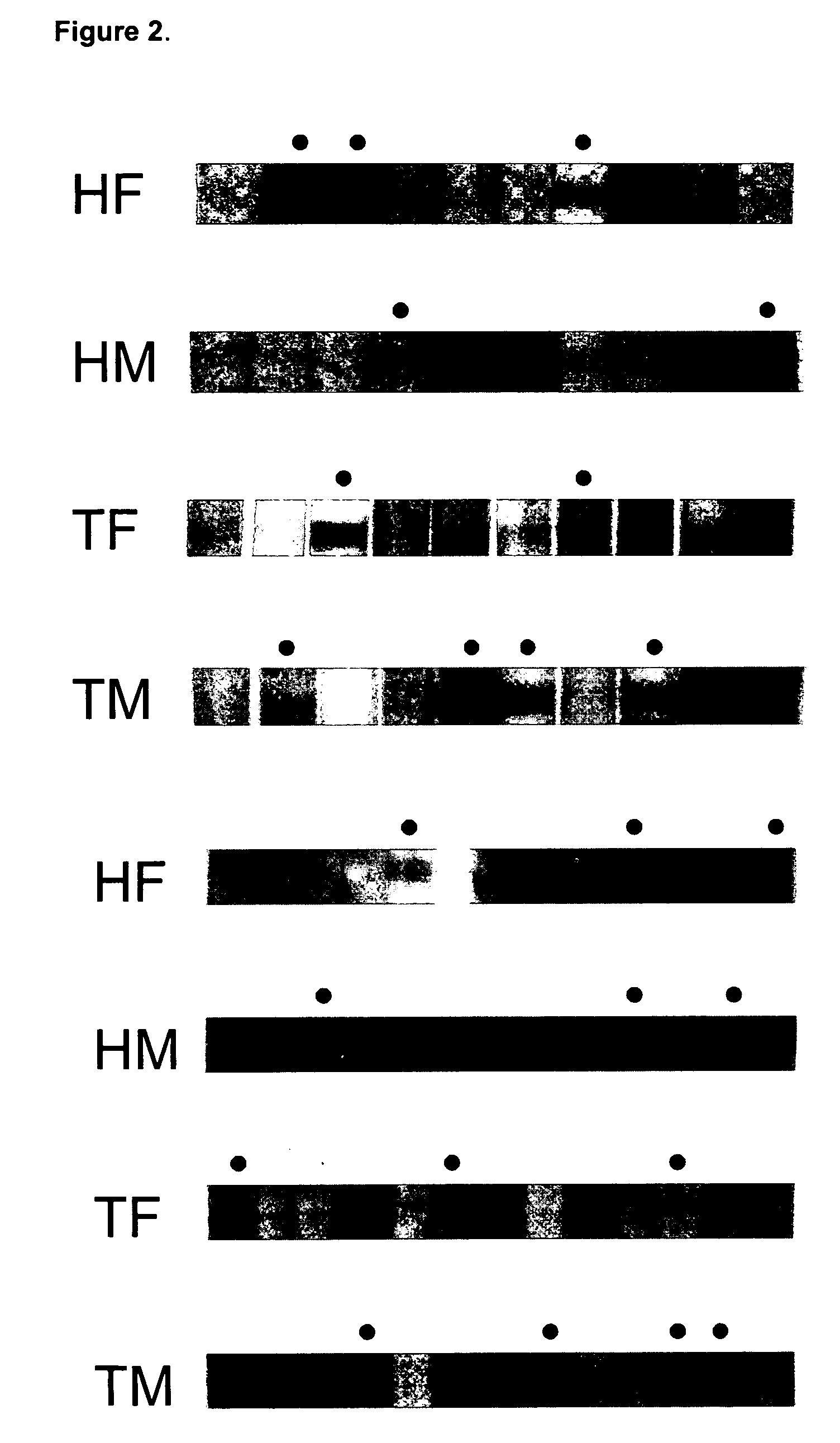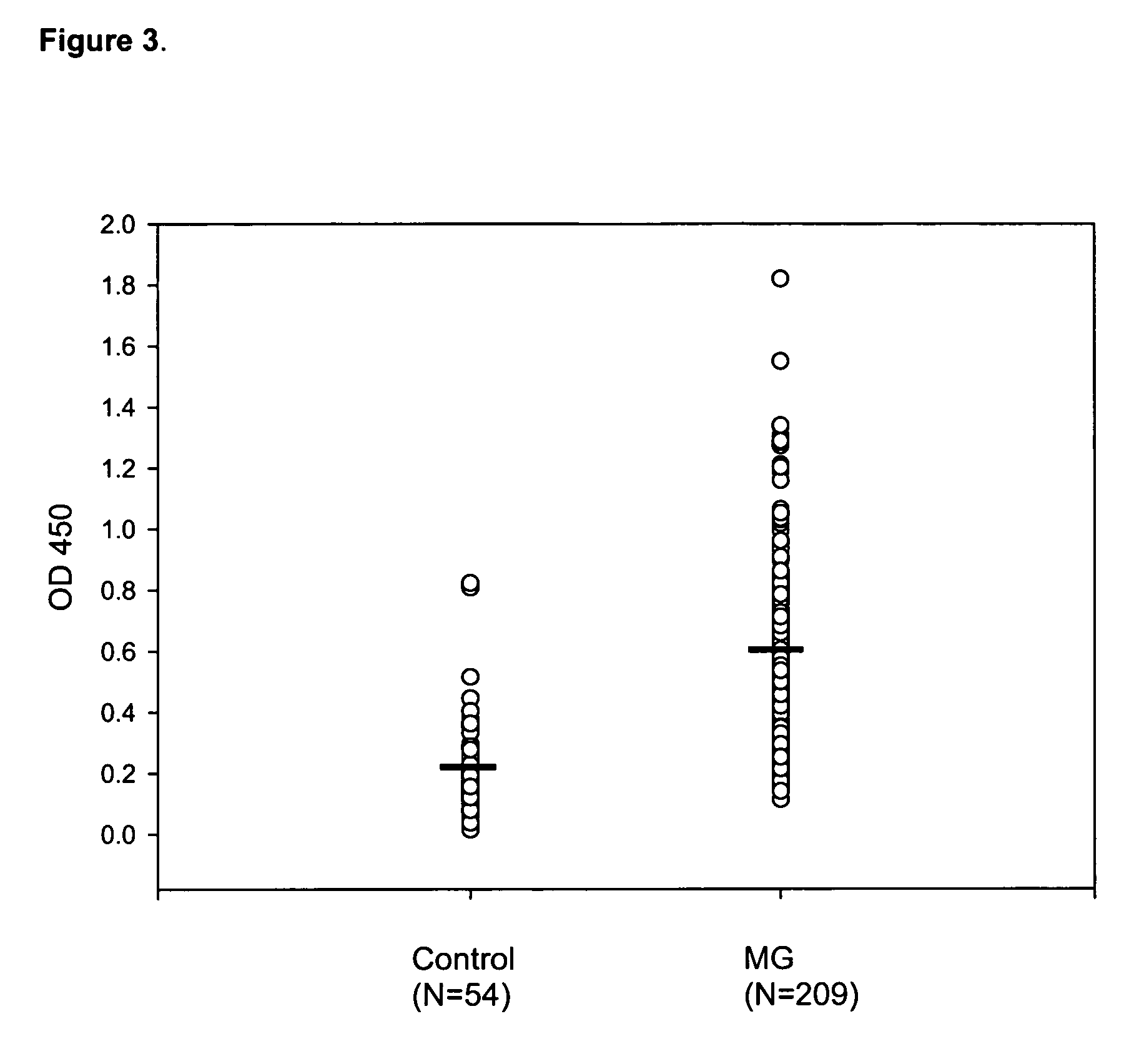Method of diagnosing myasthenia gravis and kits therefor
a technology of myasthenia gravis and kit, applied in the field of immunology, can solve the problems of patient seeking medical attention, respiratory failure, failure of neuromuscular signal transmission, etc., and achieve the effects of improving critical care, improving the effect of mg patients, and improving the effect of cholinesterase inhibitors
- Summary
- Abstract
- Description
- Claims
- Application Information
AI Technical Summary
Benefits of technology
Problems solved by technology
Method used
Image
Examples
example 1
Identification of Autoantibodies by Western Blot
[0076] Serum samples were obtained from 209 myasthenia gravis patients at Shin-Kong Hospital, Taiwan, Republic of China. The patients were divided into four groups based on their thymic pathology: thirty-seven patients displayed some degree of thymic atrophy; one hundred twenty-one patients had developed thymoma; forty patients displayed some degree of thymic hyperplasia; and eleven patients had an unknown thymic pathology. Seventy-six patients had Type I MG; eighty-one had Type IIa; thirty-eight had Type IIb, and fourteen patients had either Type III or Type IV MG. Negative controls used serum samples taken from fifty-four patients at Taichung Veterans General Hospital, all suffering from the unrelated disorder membranous glomerulonephritis (MGN), which is not autoimmune in origin.
[0077] HepG2 / C3A cell lysates were separated on 10% SDS-PAGE gels loaded with 20 μg per lane of cell extract and 2 μg per lane of hsp60 or hsp90 protein. ...
example 2
Identification of Autoantibodies by Enzyme-Linked Immunosorbent Assay (ELISA)
[0080] Aliquots of the serum samples described in Example 1 above, were further evaluated by ELISA. Microwell ELISA plates (Corning Life Sciences, New York, N.Y., USA) were coated overnight at 4° C. with 0.2 μg of recombinant human hsp60 (purified from E. coli) or hsp90 (purified from S. cerevisiae) in 0.1 M NaHCO3, pH 8.6. Both recombinant heat-shock proteins were purchased from Sigma-Aldrich Co. The coated plates were then washed with PBS three times for one minute each, and then incubated with 200 μl of blocking solution (5 mg / ml bovine serum albumin (“BSA”) in PBST) at 37° C. for 1 hour. Each well was washed with PBST six times for one minute each. Next, the plates were incubated with patient serum diluted from 1:100 to 1:800 in blocking solution for 1 hour and 30 minutes at 37° C. After incubation with the primary antibody, the plates were again washed six times for one minute each with blocking solut...
PUM
| Property | Measurement | Unit |
|---|---|---|
| temperature | aaaaa | aaaaa |
| affinity | aaaaa | aaaaa |
| concentration | aaaaa | aaaaa |
Abstract
Description
Claims
Application Information
 Login to View More
Login to View More - R&D
- Intellectual Property
- Life Sciences
- Materials
- Tech Scout
- Unparalleled Data Quality
- Higher Quality Content
- 60% Fewer Hallucinations
Browse by: Latest US Patents, China's latest patents, Technical Efficacy Thesaurus, Application Domain, Technology Topic, Popular Technical Reports.
© 2025 PatSnap. All rights reserved.Legal|Privacy policy|Modern Slavery Act Transparency Statement|Sitemap|About US| Contact US: help@patsnap.com



